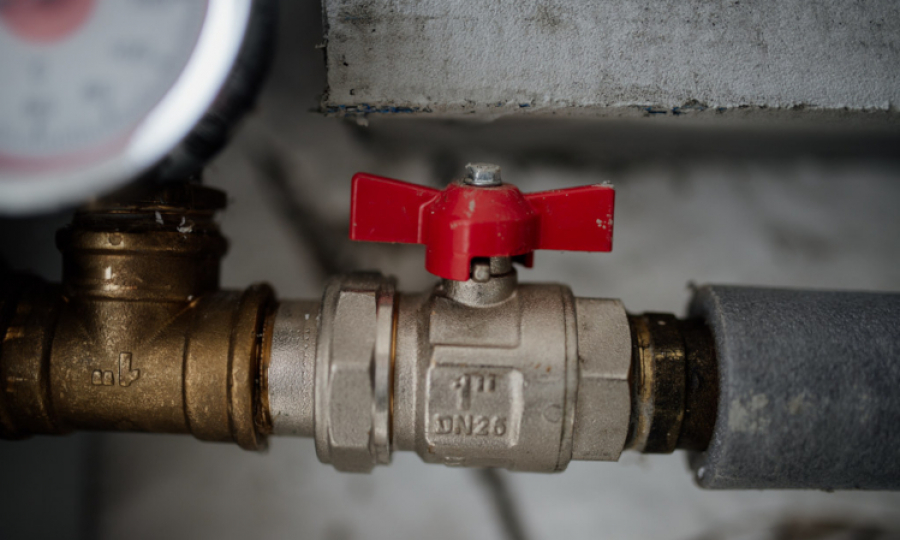These valves are typically available in conical or cylindrical shapes. Plug valves are valves that factories utilize to start or stop fluid flow.
These valves offer basic, moderate throttling, diverting, and on-off features. However, what is a plug valve, and how does it operate?
What Are Plug Valves?
A plug valve is a type of valve with conically-tapered or cylindrical plugs that operators can rotate inside the valve body to control fluid flow through the valve.
The plugs in plug valves contain one or more hollow passageways going sideways through the plug. This enables the fluid to flow through the plug whenever the valve opens.
Plug valves are typically economical and straightforward devices. That is why people will prefer plug valves when it comes to the question of the plug of valve vs. ball valve.
Usually, the handle or stem is attached to a bigger diameter end of the plug whenever the plug is conically tapered.
Typically, plug valves don’t have bonnets. However, they sometimes have the end of the plug with the handle mostly or entirely exposed to the exterior.
In these situations, there is typically not much of a stem. The handle and stem sometimes come in one piece, often a simple L-shaped handle connected to the end of the plug.
Most of the time, the other end of the plug is exposed to the exterior side of the valve. However, it has a mechanism that keeps the pin in the body.
What Are Various Forms Of Plug Valves?
Eccentric Plug Valves
This type of plug valve is best for applications that require minimal friction and a higher seating force from an open to a closed position.
Usually, eccentric plug valves are utilized in a wide variety of flow control or isolation systems. This includes air, slurries, sludge, sewage, and other services.
Expandable Plug Valves
These valves comprise a couple of parts and a complicated rotation motion that helps prevent the seals' abrasions or deterioration.
They’re an ideal fit for avoiding contamination of products in applications that don’t need double isolation.
This means that expandable plug valves are best for applications requiring high-quality sanitation processes, such as manufacturing medical injection molding parts.
Non-Lubricated Plug Valves
This type of plug valve is utilized in applications that prioritize low-maintenance processes. Non-lubricated plug valves include fully lined, lift-type, and elastomer sleeved plug valves.
Lubricated Plug Valves
Lubricated plug valves are best for dirty upstream uses. This type of plug valve can easily withstand corrosive or abrasive materials. They also don’t get clogged.
Lubricated plug valves need regular resealing to maintain maximum effectiveness.
What Is A Plug Valve Used For?
Plug valves are an excellent choice for many light industrial and commercial uses. This includes regulating fluids, handling liquid or gas fuels, directional flow control, and managing low-temperature services.
Because of their multi-port design options, minimal resistance to flow, leak-tight service, inline maintenance capabilities, and smooth design, plug valves find uses throughout various systems and industries.
The truth is that most high-quality auto parts wholesale companies use plug valves for their processes.
How Does A Plug Valve Work?
A plug valve is built on a plug with a hollow passage in the valve body. The quarter-turn movement produces an alignment between the hole and the pipe. This results in an open position.
When turned to a 90-degree angle from the open state, the valve sits across the pipe leading to a closed position.
Usually, a plug valve is available in a range of various port openings and designs.
- 3-Way Plug Valves
These valves include the 3rd port. Usually, it is located at the right angle from the inlet. This type of plug valve can help in directing flow or mixing flow.
- 2-Way Plug Valves
The design of a 2-way plug valve enables a closure element in the middle, together with a two-way and straight-through service for the close and open function.
Pros And Cons Of Plug Valves
Pros
- They’re easy to clean
- It offers a reliable, leak-tight feature
- They utilize multi-port designs that help in lowering the number of required valves.
- Provides minimal resistance to flow
- Can be quickly closed or opened
- It has fewer components and a simple design
Cons
- Pressure drop might happen when lowering port
- Plug valves cost more compared to ball valves
- Actuators are needed for bigger valves
- A tremendous amount of friction is needed to rotate the plug. This means more considerable forces are required to use the valve.
As you can see, the benefits of plug valves easily outweigh the drawbacks. That is why almost all high-quality glass milk bottle wholesale manufacturers utilize these valves for their operations.
Conclusion
Whether it is chemical industries, fuel gas piping systems, non-abrasive slurries, liquids, or gasses, plug valves play a crucial role in an extensive range of industries and applications.
So, if you’re looking for a suitable valve for your company, you should consider plug valves.
